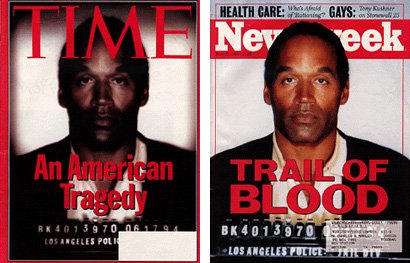Photo fraud happens in journalism too
/in this 2003 photo from the iraq war, the photographer combined PARTS of two photos so that the civilian FACED THE SOLDIER AS THE SOLDIER GESTURED. WHEN THIS WAS DISCOVERED AFTER PUBLICATION, THE PHOTOGRAPHER WAS FIRED FOR VIOLATING POLICY AGAINST PHOTO MANIPULATION.
I’m taking a stand on the hottest media story going right now: I prefer “KateGate” over “WaterKate.”
Multiple international news organizations told their affiliates last Sunday to kill a Kensington Palace photo of Kate Middleton, the princess of Wales, with her children on British Mother’s Day because of telltale signs that the photo had been digitally altered. Almost all instances of photo alterations go against newsroom policy, but what I think really spooked the news agencies was the possibility that Kate, who at that point hadn’t been seen in public since a surgery two months ago, was added to the photo by use of Adobe Photoshop.
This, of course, ignited rather than quelled speculation about Kate’s life at the moment, causing followers of the royal family to draw the obvious conclusion that Kate was still physically recovering, or the victim of domestic violence, or divorcing her husband, or dead. (A more recent, bystander video seems to eliminate at least a couple of these possibilities.)
The photo manipulation in this case came from the originating public relations source, but over the years some staff photographers and freelance photographers have been caught doing it. The forms vary, such as staging a scene or coaching a subject for photos that are later presented to the audience as spontaneous and authentic (as opposed to obviously posed photos). It also includes adding or subtracting objects after a photo is shot. News organizations have written guidelines that almost universally prohibit such actions as unethical distortions of truth.
Some infamous cases from history:
from june 1994: Time’s darkened cover of ACCUSED KILLER o.j. simpson, contrasted with newsweek’s unaltered version. the original photo for both was simpson’s police mugshot.
Civil War photographers such as Matthew Brady and Alexander Gardner moved dead bodies around for greater visual impact.
In the Pulitzer Prize winning photo of a slain student at Kent State University in 1970, an editor airbrushed out a background fence post that seemed to protrude from the head of an anguished student in the foreground.
For a cover photo in 1994, Time magazine darkened the police mugshot of accused murderer O.J. Simpson, bringing an avalanche of public criticism that the magazine wanted Simpson to look more menacing and in the process committed a racist act. Time eventually apologized but initially defended the computer enhancement by saying it wanted to portray a mood reflective of the headline, “An American Tragedy.” The cover, indeed, was labeled in small letters as a “photo illustration.”
A Los Angeles Times photographer offered a photo from the Iraq War in 2003 that was actually a combination of two photos snapped seconds apart. The photo, which was widely published, showed a British soldier ordering a civilian with a baby to take cover from Iraqi fire. The photographer, who was fired, said he transported a different pose of the civilian from another shot to create a more dramatic composition.
A freelance photographer hired by The Associated Press took a photo of a fighter taking cover during the Syria war in 2013. Before transmitting to the AP, the photographer cloned a piece of natural background in the photo and placed it over another photojournalist’s video camera that was visible in a corner of the shot. The freelancer said he thought the camera was distracting. He had helped the AP win a Pulitzer for its Syria coverage the previous year, but the news agency nonetheless cut ties with him.
The New York Daily News erased a woman’s gory wound in a front-page photo from the Boston Marathon bombing in 2013. Editors decided it was too graphic (disturbing image warning if you click). This angered their own staff photographers, who wondered why the paper didn’t simply pick a different photo.
For a better sense of the boundaries, I consulted former colleague Tamika Moore, a longtime photojournalist and now a managing producer for Red Clay Media, who said only “minor editing techniques” such as cropping or removing dust are acceptable. She pointed to the code of ethics of the National Press Photographers Association, which says to “respect the integrity of the photographic moment.”
“Most of the time, when photojournalists who have manipulated their photos outside of that integrity come under fire, it’s for mediocre photos that are not made more compelling by the manipulation,” Moore wrote in an email. “It’s simply not worth having your integrity compromised or to not be taken seriously for something so minor.”
Some aspects of journalism have looser standards. It’s generally understood that photos provided by institutions for PR purposes will have undergone some “retouching” (sounds so much more innocent than “manipulation,” doesn’t it?).
It’s also understood that photos get manipulated frequently for beauty and fashion magazines and webpages. That may be changing, though, as more publishers become aware of the psychological harm done to consumers, especially young ones, who stress over their inability to match the (phony) physical perfection they see in such publications. Moore said some celebrities, such as Zendaya, Lupita Nyong’o and Kate Winslett, have protested or forbidden digital alterations to photos of them because the practice “perpetuates unrealistic standards of beauty.”
It would be great if journalists never again engage in photo manipulation. But lots of other people are. Advancements in photo editing software and artificial intelligence in general make it ever easier to alter photos for a political or PR purpose. Yes, news organizations should worry about internal cases of manipulation, but the bigger challenge is to remain constantly on guard against the blatant and subtle infractions of others.
“I’m old-school, but the standard is (do) nothing outside of things that you wouldn’t normally do in a darkroom.”


